About five minutes after sending this, I realized Travelfish is 17 years old—not 15. Says a lot about the last two years I guess…and my math skills. Apols!
I’d be lying if I said it feels like it was only yesterday that Sam and I launched Travelfish.org way back when on July 12, 2004—fifteen years and a day ago. Somedays, particularly over the last 18 months, it has felt like a lifetime ago—on another planet.
Travel in Southeast Asia changed massively over our first thirteen years. Then, in early 2020 it changed in a manner nobody foresaw. In mid 2021 the region (and much of the planet) remains mired on a Covid merry–go–round spinning at an increasingly worrying rate.
Sometimes a soothing salve can be to look back rather than forward. Face it, who knows when, and in what form, any sense of normalcy will return to independent travel. With that in mind, here are fifteen special moments from fifteen years of Travelfish. I know some readers have been on board from the very start, and I hope both you and more recent arrivals enjoy these.
Thank you for all your support over the years.
Also, a huge thanks to Sam and Melissa for the new Couchfish logo.
Stuart
Taunggyi Balloon Festival, Burma
Candle lit faces under a balloon, Taunggyi, Burma. Photo: Stuart McDonald.
I found myself at the “Fire Balloon Festival” by chance. I was fresh off the Kalaw to Inle Lake trek and met up with some other travellers who had hired a car to get there for the evening. I tossed in for gas and experienced one of the most amazing festivals I’ve ever seen. Enormous candle–decorated hot air balloons were launched into the night air. There was no crowd control and you could get right under the balloons while the candles were being lit. The yellow flames cast an amazing hue over the crowds underneath each balloon, and while aloft they were magnificent, it was just as spectacular back on the ground.
Slinging bowls, Mandalay, Burma
Food merchant, Mandalay, Burma. Photo: Stuart McDonald.
Still in Burma, so much gets written about the varying cuisines of Southeast Asia, and deservedly so. Fewer words though about the methodology. This guy, working a street–front stall near my guesthouse in Mandalay, was a machine. His “work station” was arranged to a tee, everything within reach of his hands with no more effort than a swivel to the left or right. He was hypnotising to watch. His bowls were good too.
A not for vegetarians food stall, Phnom Penh
Would you like some meat with that? BKK1, Phnom Penh, Cambodia. Photo: Stuart McDonald.
While in Phnom Penh I did a street food tour with Phnom Penh Food Tours (Note: one of the co–founders used to work with Travelfish). I was so impressed with the guide Vanarith, that I hired him for some more private exploring. I told him I wanted to go eat our way around a single city block, so in the lower reaches of BKK1, we did just that. By the time we hit this stall I was stuffed to the eyeballs, but I still managed to labour on. If you can do one thing well, stick with that—don’t diversify. I think this guy took this to heart.
Banteay Kdei, Angkor, Cambodia
Late afternoon at Banteay Kdei. Photo: Stuart McDonald.
Through Covid, photos of a deserted Angkor Wat have become symbolic of how the virus has ravaged Cambodia and its tourist industry. This photo was taken at Banteay Kdei, a short ride (or long walk) from Angkor Wat, in peak season of the year before Covid. One of the wonders of greater Angkor, is that, with a bit of time and dedication, anyone can find a near empty site. Once found, you can find a shady spot and enjoy the late afternoon light show, with your only company the birdsong and the security guard asking to get off your bum ten minutes before closing time.
Amed, Indonesia
Bunutan Beach at sunset, Amed. Photo: Stuart McDonald.
Set on the north coast of East Bali, Amed’s black sand and pebble beaches have for years offered an escape from the heavier touristed south. A series of bays, many of the dividing headlands offer spectacular views over to Bali’s tallest and holiest peak, Gunung Agung. On a clear sunset, Agung appears like a volcano out a child’s book—a classic slope running down to the island’s north coast. In the foreground, crystalline bays host white jukungs bobbing in the gentle swell. At dawn, look right instead of left and watch Lombok’s Rinjani emerge out of the dawn. Some sniff at stone beaches, but in the right light and a light swell, they’re just another example of Bali’s earth–shattering beauty.
Lake Toba, Indonesia
From the rim with the scooter. Lake Toba. Photo: Stuart McDonald.
From the centre of the archipelago to the far west, Lake Toba was made for superlatives. I spent an hour sitting beside a lake on an island within a lake within an island—wondering how many places on the planet can claim that. One day while scootering, I left the island and rode up the lake’s west coast. Following a dirt trail I found a viewpoint where I felt like I could see to the edge of the Earth. Below, the lake’s deep blue, the shades of green of a caldera rim plunging into it, and, in the distance, the purple blue of more volcanoes to the north and a sky dotted with fluffy white clouds. The brilliance and serenity were second to none—Toba is the kind of place memories are made of.
Nam Kading, Laos
On the Nam Kading. Photo: Stuart McDonald.
To be honest I can’t remember why Sam and I even got off the bus here, but shortly afterwards we found ourselves on a tiny sampan heading up the Nam Kading. With a tiny outboard we cruised up the incredibly still river, untouched jungle tumbling down both banks. Once the traffic noise from the highway faded there was nothing but the putt putt of the engine and the occasional bird. About an hour in we reached a small set of rapids which blocked a journey further, but even our short trip was a lesson on three fronts. Always get off the bus. Laos is gobsmackingly beautiful. Always pack a pillow.
Pimai Lao, Luang Prabang, Laos
Kids wanting to share the joy. Pimai Lao, Luang Prabang. Photo: Stuart McDonald.
We first hit Luang Prabang in 1997, our trip accidentally coinciding with Pimai Lao—Lao New Year. Depending on the event, the multi–day celebration rolls through the city parade style, into the temples and even across the Mekong to the far bank. We knew it was for New Year, a Lao take on Thailand’s Songkran, but that was about it. Caught up in the flow each day it was fun, educational and exhausting—in about equal measure. Catching our breath sitting on the pavement near a temple one day, we caught the attention of this squad of kids, and they wanted to share their joy with us—even if it was in the form of powder then a soaking.
Seafood market, Kota Kinabalu, Malaysia
Something on fire—I can’t remember what it was, but it was hot! Photo: Stuart McDonald.
Regular readers will know I love my food, and when it comes to seafood, well, a good seafood barbecue is hard to beat. Where better to arrange a seafood barbecue? At a seafood market where save catching the fish yourself it isn’t going to be any fresher. When it comes to seafood markets, Kota Kinabalu’s waterfront night market is about as good as they get. Packed to the gills (sorry!) with vendors there’s a vast array of options (sustainable fishing policies are unfortunately not a highlight here) to choose from. There’s also chicken wings—tonnes of them. Heaven on a stick I tell ya. The large number of stalls, all working over open flames and under low roofs makes for a smokey, delicious and memorable affair.
KL bar–hopping, Malaysia
PS150, Kuala Lumpur. Photo: Stuart McDonald.
For many of my early trips to Kuala Lumpur a night out was little more than a few Tiger Beers in a backpacker bar or on Jalan Alor. Nothing wrong with that of course, but on a later trip an evening guide pried me away from large Tigers and into the city’s more fancy–pants scene. While Kuala Lumpur (and Malaysia in general) are not great havens for budget drinking, even with that in mind “kind of speakeasy–style bars” like Omakase, Pahit and PS150 had withering prices—withering. Still they were an interesting mash–up to meet, well, people who don’t chug Tigers on Jalan Alor. Favourite moment: the patron at Omakase who asked me, seriously, what I was doing there, then suggested I would feel more at home at the Reggae Bar. Thanks mate.
Those feet were made for walking, Singapore
Bukit Timah station, Singapore. Photo: Stuart McDonald.
Ask anyone who has spent some time in Southeast Asian capital cities what they like about Singapore and chances are “walkable footpaths” will be amongst their top five. While Bangkok, Jakarta, Kuala Lumpur or Hanoi are each, in their own way, great walking cities, they are all “walk with care” cities—expect the unexpected. Try Hanoi on crutches for ten days—I do not recommend it. In Singapore however, you can just walk. You don’t have to fret about Grandma traps, traffic on the footpath or a random piece of metal well–placed to remove that left eye you don’t really need. So when in Singapore I walk a lot. Some of the great walks are indeed paved—not just the urban pavements, but also scenic walks such as the Southern Ridges. But before I wax too lyrical about pavements, one of the best walks I’ve found there is off the pavement, and on the train track. Walk the route the trains used to ply. Really.
Hin Wong Bay, Ko Tao, Thailand
My special place. Hin Wong Bay, Ko Tao. Photo: Stuart McDonald.
With so many islands, it can be tricky to pick a favourite. I love Ko Pha Ngan and have spent more time there than on any other island, and Ko Tao would be far from my favourite island, but… there’s always a but. If I had to pick one spot, on one island, one with particular happy memories—one of those days that I wished just went on and on, forever—it would be Hin Wong Bay on Ko Tao. The bay has changed a bit since I first visited, with a few more places to stay and a much improved road (yes, low bar), but it is still a very chilled out spot on what was a very busy island. At the right time of the year, when the wind is offshore, the bay is as glass, and while there is little in the way of a beach, you can dive off the distinctive boulders scattered all over the island. Quiet. Peaceful. Lovely.
Northern Thailand on two wheels
Cosmonaut companions somewhere between Chiang Mai and Phrao. Photo: Stuart McDonald.
Yes I know. The easiest way to kill or maim yourself in Thailand is to get on a scooter. Bonus points for being unlicensed. Triple points for not wearing a helmet. That said, Thailand’s north is rivalled only by Vietnam for scooter–touring. Buddy up with some like–minded pals, grab some bikes and go. Stay off the highways, stick to secondary and below roads—skip the back way for the back back back way. The number of routes are near endless. Start with something simple and popular like the Mae Hong Son Loop, then maybe go for a northern loop via Mae Salong, or a Nan loop, or somewhere in between. It is a fabulous way to explore the country with little in the way of dull moments, though do expect a dull backside if you end up doing 18,000 km on a Honda Dream. Best of all, if you don’t like scooters, rent a car.
A good bowl, Vietnam
A good bowl of bún cá is hard to beat. Photo: Stuart McDonald.
I’ve touched on food a few times, but in the case of Vietnam, I’m sorry, but both my choices are stomach related. While I don’t expect all to agree with me, I think Vietnam has the best cuisine in the region. It is just that good. There is so much of it and so much variety, you could eat something different for every meal for a year and still barely make a dent in it. I know phở is arguably the country’s most famous dish, but if I had to pick one dish, one which would be the last Vietnamese bowl I’d have for the remainder of my life, if would be the above bowl of bún cá from behind the market in Châu Đốc close to the Cambodian frontier in the Mekong Delta. As with everything in Vietnam, it wasn’t just the bowl. It was the company, the place, the staff, the temperature, the racket, the traffic, the sweeping, and the light all coming together into this sensory overload that could have had me linger all day. Sadly I didn’t as I had to go look at bloody Sam Mountain. If you find yourself in Châu Đốc, try this bowl and skip Sam Mountain.
All one needs is cà phê sữa đá
Coffee #543 for the day, Hue, Vietnam. Photo: Stuart McDonald.
Iced coffee with milk. Is there a better drink in the known universe? Refreshing yet energising. Beautiful to look at. The way the coffee drips down, caressing the ice cubes before plonking into the condensed milk sea at the base of the glass. That first sip. The way the ice crunches between your teeth. You’re hunched over in a small—too small for your butt—red plastic chair. In front of you, a smaller red plastic stool. Stir your shot up then sip, then stir some more. Observe your surrounds—there is always 68 million things going on on any Vietnamese street so sip, observe, blink a few times, then sip some more. When you’re done and stand to go, don’t forget to pull the too–tight red plastic chair off your backside. The above coffee was in Hue.
And, that’s a wrap! If you have a memorable moment from your travels in Southeast Asia, please feel free to add it in the comments. Thanks again for all your support through these difficult times.
Stuart






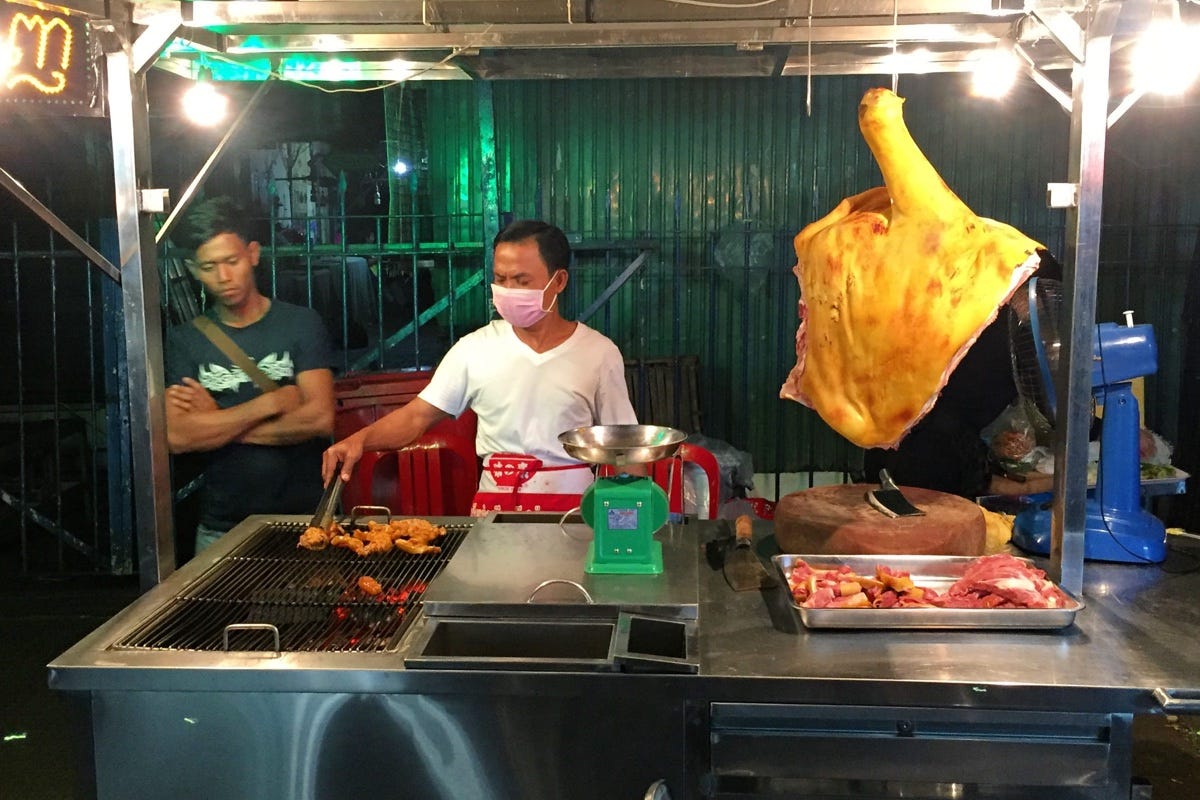


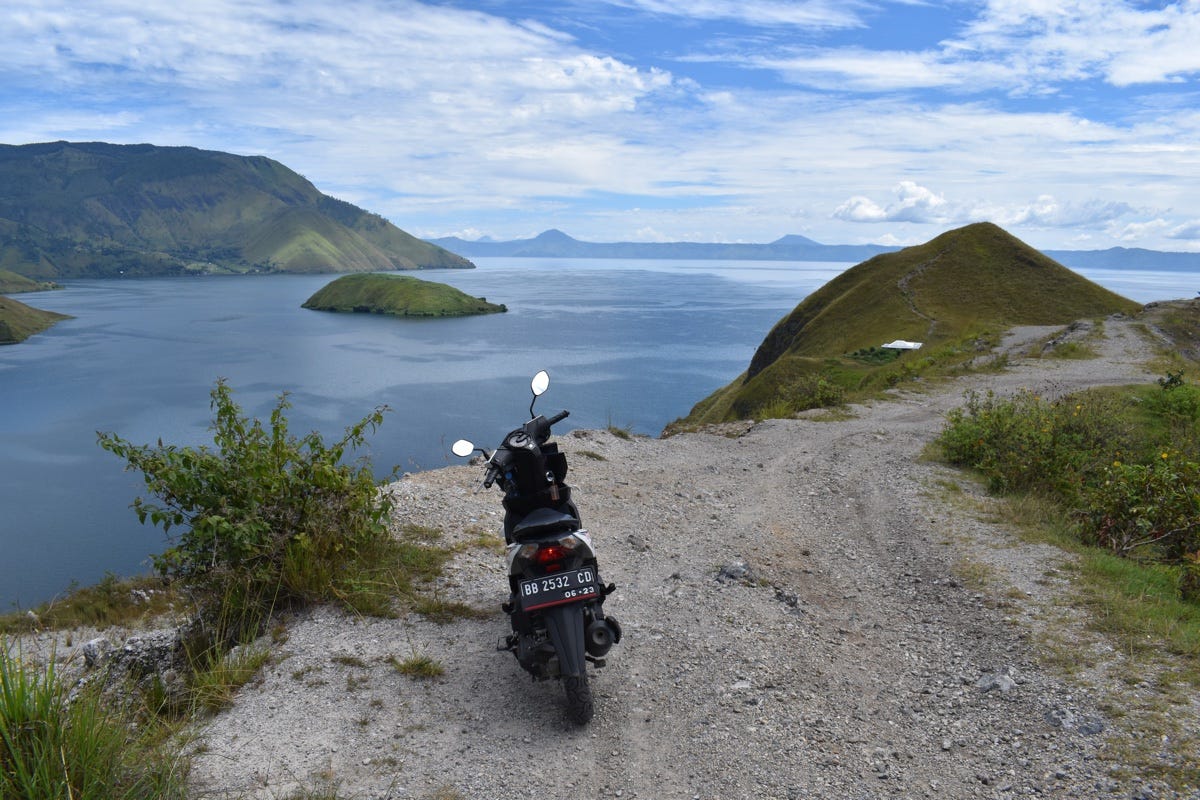
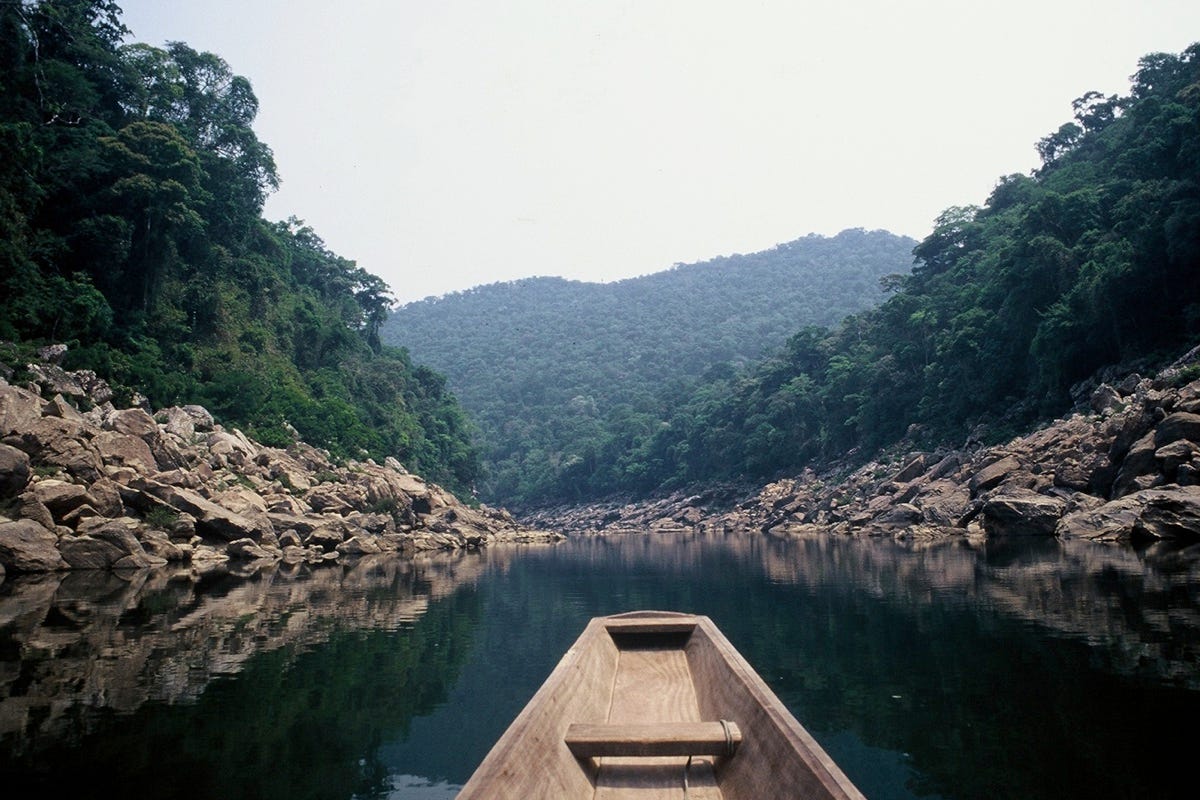



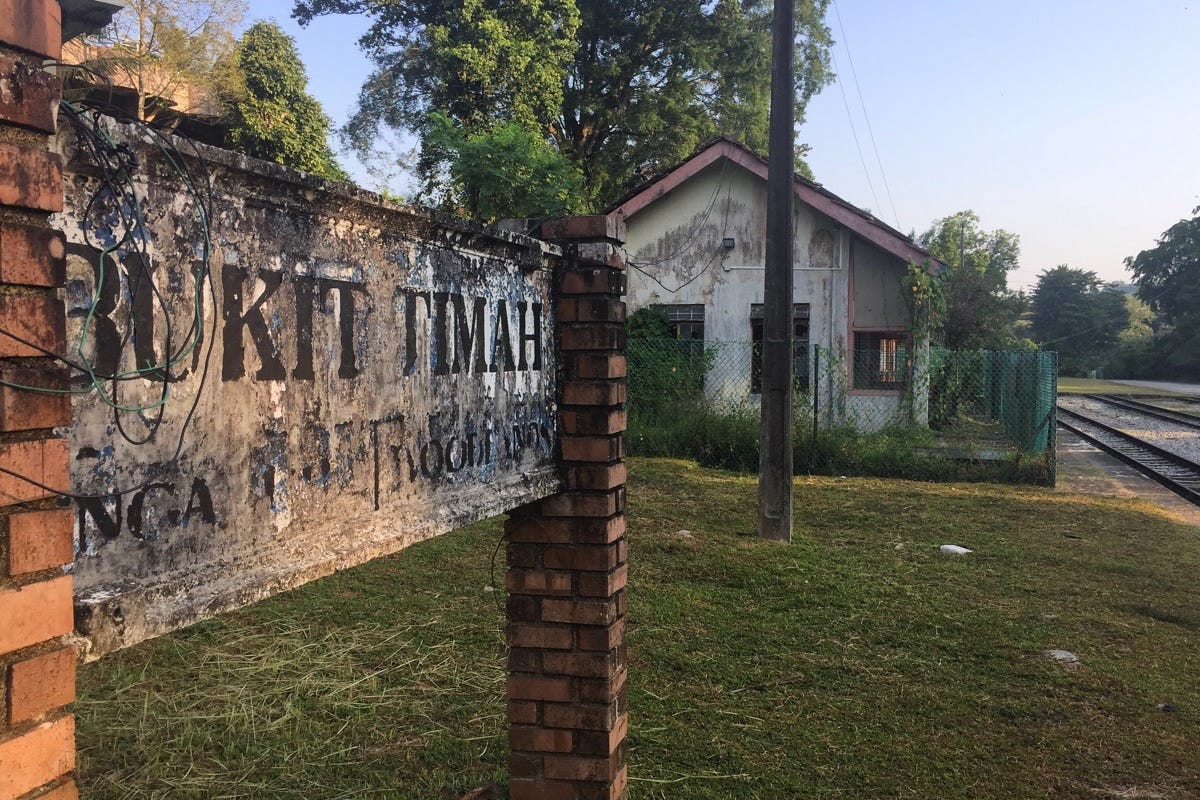



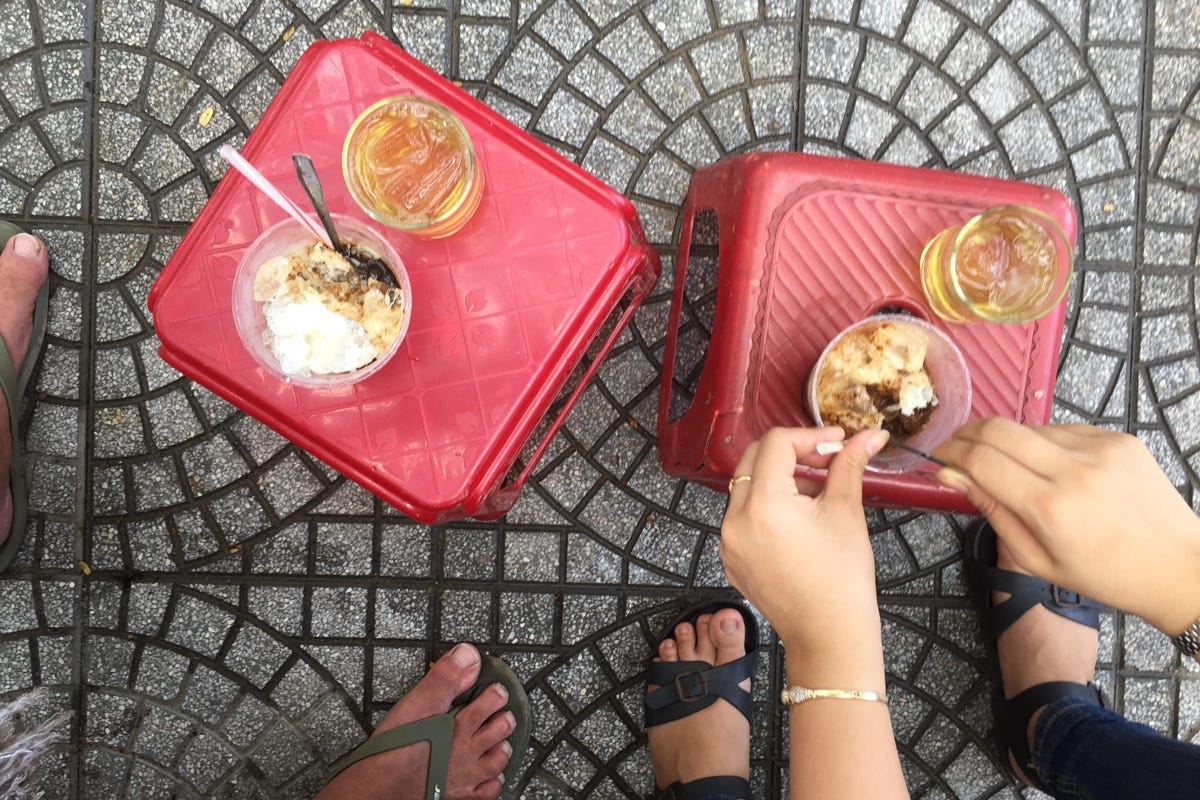









Share this post